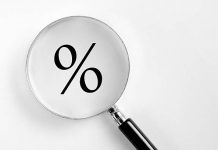Markets
Risk was on fire yesterday after a batch of consensus-smashing US data; from ever-rising regional business confidence indicators in NY and Philadelphia, over the lowest jobless claims since the pandemic erupted to searing retail sales helped higher by government-sponsored paychecks. European stocks rose about half a percent, Wall Street with new records for the DJI (+0.9%, over 34k) and S&P500 (1.1%). The Nasdaq outperformed (1.3%). Bond markets’ reaction was less straightforward. US yields … fell. The decline started already during Asian dealings, continued in European hours and even accelerated after the data release. This owes to the Fed’s credible pledge to keep policy ultra-easy as it considers any inflation uptick temporary amidst an economy heating up. A comeback in late US dealings didn’t prevent rates from dipping 3.7 bps (5y) to 5.6 (10y) still. The US 10y en 30y yield gave up neckline support at respectively 1.6% and 2.3%. The German yield curve bear flattened with yields down 1.1 bp (2y) to 3.2 bps (10y), thus erasing much of Wednesday’s (real yield driven) rise. EUR/USD finished at 1.1967, slightly down from 1.198. The pair tested 1.199 resistance multiple times. However, the lack of euro momentum as seen in other euro crosses as well as a bottoming dollar prevented the couple from breaking higher. The trade-weighted dollar briefly dipped south of 91.6 support but clawed back (91.67). EUR/GBP remains near the 0.87 barrier, awaiting but not seeing signals yet for a leap higher.
Asian trading is quiet. Stocks are colored light green following new records on WS. Chinese equities are almost flat as Q1 growth numbers showed cooling growth (cf. below). The Chinese yuan trades marginally weaker (USD/CNY at 6.528). The US dollar entered Asian dealings strong but pared most of the gains in the meantime to trade virtually flat. Core bonds marginally lose ground. The Bund underperforms in a catch-up move with the US late yesterday.
Today’s economic calendar contains US consumer confidence (U. of Michigan). Consensus expects a steep rise from 84.9 to 89. The prospect of a return to normal as well as yesterday’s blowout retail sales indeed point at strong consumer sentiment. We don’t expect this to completely turn this week’s yield dynamics on this final trading day though. While still penciling in higher rates in the medium term, the ST technical picture deteriorated. EUR/USD price action suggests follow-up gains now need a stronger euro but that might be tricky from a daily perspective with the ECB policy meeting and PMIs looming next week. The dollar for its part has probably weakened enough by now. EUR/GBP is nearing 0.87 for an umpteenth time this week but we’d be cautious in forecasting a sustained break. Next week is crunch week for the UK as well with the labour market report, CPI, retail sales and PMIs due.
News headlines
Chinese GDP grew by a record 18.3% Y/Y in Q1, but quarterly growth dynamics showed a significant and below consensus deceleration to 0.6% Q/Q. That’s the second weakest since the start of the series in 2011. China’s National Bureau of Statistics said that the national economy presented continued momentum of stable recovery even though the outlook remains uncertain. Monthly data showed that production rose by 24.5% in Q1 compared with Q1 last year, with retail sales up 33.9% and fixed asset investments 25.6%. We need to bear in mind that unlike in for example Europe, China suffered the Covid-setback effectively in Q1. Looking at monthly changes, the most positive dynamic is in consumption which profits from the relaxation of virus-containment measures in early March.
New Zealand’s manufacturing PMI surged from 54.2 to 63.6 in March, the strongest reading in around 20 years of data collection. The PMI’s 3-month average of 58.4 is the best since 2004. Business NZ, responsible for the survey, reported an increase in all five sub-indices, ranging from new orders (72.5 from 58) to employment (53.5 from 50.2). More construction activity, a buoyant primary sector, increased government activity, movement toward domestic sourcing and improving external demand all added to business’ improved sentiment. NZD/USD didn’t react to the data and trades on a slightly weaker footing in a general USD-move.













